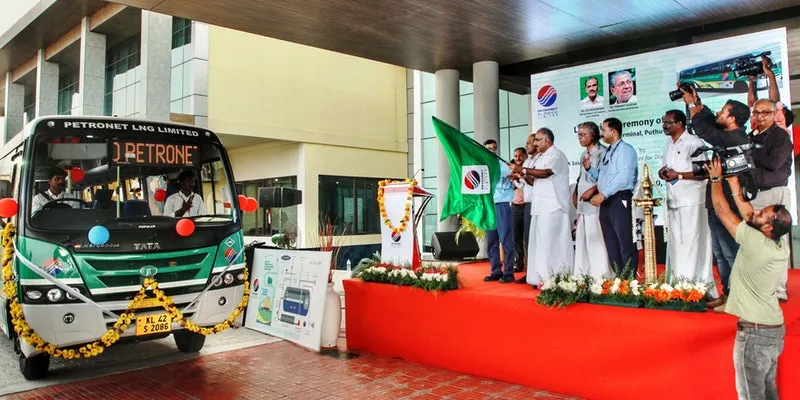Tata Motors delivers India’s first LNG powered buses
Unlike CNG, LNG powered systems operate at much lower pressure and evaporates quickly. This also reduces the chances of fires.
Tata Motors completed the delivery of India’s first LNG (liquified natural gas) bus on Monday. The company delivered four units of the 36-seater Starbus LNG models to LNG Petronet. Of these, two units will be operational in Dahej, Gujarat, and two units in Kochi, Kerala.
Designed and developed indigenously by Tata Motors, the company first showcased the model at the Auto Expo 2020, which was held in New Delhi last month.

Tata Motors claims the LNG buses offer a clean, safe, affordable, and comfortable mode of mass transport.
The fuel carrying capacity of the LNG-powered buses in Tata’s product portfolio can carry up to 2.5 times more than the CNG (compressed natural gas) powered buses. This allows them to operate anywhere between 600 to 700 km in one tank fill.
Tata Motors also offers 36-seater Starbus LNG with 2x2 layout (available in airconditioned and non-airconditioned options), and 40-seater with 2x2 layout, and 56-seater with 3x2 layout (available in non-airconditioned option only).
Rohit Srivastava, Vice President of Product Line – Buses at Tata Motors believes the LNG powered buses are a significant leap forward in the world of sustainable mobility using alternate fuel technologies.
He says, “We have ushered into a new era of transportation. Our in-depth understanding of sustainable public transport, while developing reliable and environment-friendly public transit options, has led us to excel in this competitive industry. With LNG technology, Tata Motors is not only optimistic and future-ready but is also extending that capability towards the energy security of the nation.”
LNG buses offer superior NVH (noise, vibration, and harshness) levels. Besides that, these buses offer a significant advantage in terms of improving air quality, as well as reducing greenhouse emissions by a great margin.
Being lightweight, a reduced kerb weight of the bus allows them to carry a heavier payload (which directly means more passengers), and hence, lesser amount of fuel is consumed, leading to reduced overall emissions.
(Edited by Megha Reddy)








